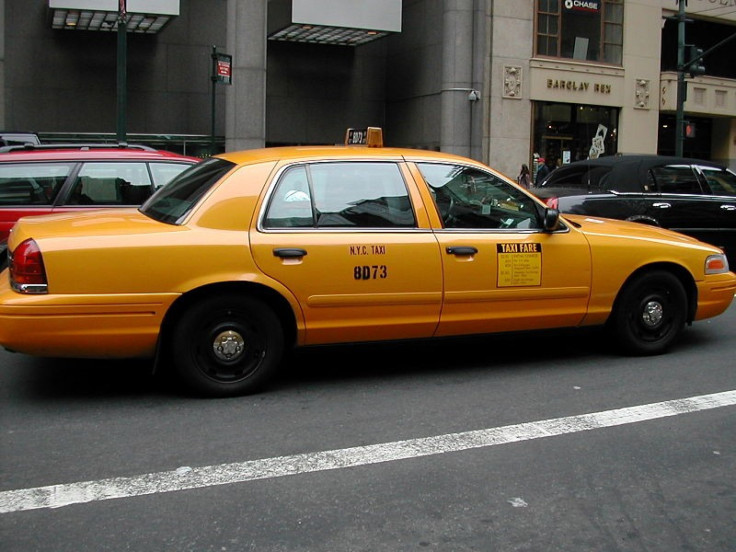South Asian Taxi Drivers: Victims And Perpetrators Of Racism
OPINION

Although I have lived in New York City for more than two decades, I rarely take taxis. Aside from extraordinary events like getting to the airport (and carrying luggage), taxis are an unnecessary luxury for me and far too expensive. The subways (despite their dreariness and filth) make for a far cheaper alternative. Moreover, given the frequent sardine-like gridlock found on Manhattan’s streets, taxis are also quite slow modes of transportation.
However, the handful of times I have taken a New York City cab, I have engaged in conversations with the drivers, most of whom share my South Asian descent.
I am not sure of the exact numbers, but I would guess that more than half of the cabbies in Gotham are from India, Pakistan or Bangladesh, and, consequently, they feel more comfortable speaking to me than they might with other passengers.
What I have learned is that South Asian taxi drivers not only have a very hard and thankless profession, but they are caught in a vortex of prejudice in which they are both the victim and perpetrators of racism and discrimination.
Even before September 11, 2001, South Asian taxi drivers faced waves of abuse, prejudice and even violence from passengers, who were often in a deep stupor of alcohol.
But after that fateful day, the “war” against Indian-Pakistani-Bangladeshi, and particularly turban-wearing Sikh cabbies, intensified.
Many Americans mistakenly associated South Asians with Arabs in the wake of Osama bin Laden’s atrocities in New York and Washington. The fact that Saudi Arabia is about 2,000 miles away from the heart of India made no difference to Americans who wanted to vent their rage against anyone whom they thought “looked Middle Eastern.” Consequently, thousands of New York City taxi drivers became easy and convenient targets of abuse and attacks.
South Asian cabbies have told me that they’ve been spat upon, cursed at, hit, punched and, in one case, even stabbed.
One Sikh driver once joked to me that he was called “Arab,” “Muslim” and “terrorist” so often that he was considering converting! Of course, he was kidding, but his comment underscored the absurdity of someone mistaking a Sikh for a Muslim, as these two groups have historically been bitter enemies in Northern India.
But there is little they can do about the hostilities and rude behavior they face on the job; since most come from very poor families in the “old country,” they are required to work killer shifts (12-hour days are not uncommon) in an often hostile environment in order to keep generating income for their loved ones.
However, on the other side of the race/ethnic ledger, South Asian cabbies have themselves been accused of practicing racism and discrimination themselves -- that is, they tend not to pick up black and Hispanic passengers, particularly young men.
When I asked the drivers about this charge, they tend to get silent and uncomfortable, perhaps because they know that they can get in trouble with the city and Taxi and Limousine Commission if they knowingly reject fares based solely on race.
Indeed, I can remember only one cabbie (an Indian fellow, I recall) who openly admitted to me that he never picked up black people as fares, because he believed they were all “poor, violent criminals” who wanted to rob him.
When I asked him if he would reject a black man wearing a respectable suit and tie, the cabbie smiled and said he wasn’t sure.
His attitude, I think, is quite common, although few would confess to such views publically.
But to be fair, taxi drivers have many other criteria for accepting or rejecting passengers -- in Manhattan especially, many will not take people to the outer boroughs regardless of race (unless they are going to the airports, where they are guaranteed return fares).
Some cabbies will not pick up anyone who looks “dangerous” (including young white men with long hair or those who look like delinquents) or look like they cannot pay their fare.
Perhaps they have a point -- sort of.
In 2010, CNN reported that taxi and livery drivers have the tenth-most dangerous profession in the United States, with a fatality rate of 19.3 per 100,000 workers. Part of this carnage was, of course, related to the frequency of traffic accidents but also to the fact that cabbies (like liquor store clerks) carry cash, making them likely crime victims.
“They often work in some of the more dangerous urban neighborhoods, taking people home late at night who fear walking the streets. Many are killed in robberies,” CNN said.
Huge B, Price, the president of the National Urban League, once wrote about the racism by South Asian cabbies against blacks: “The prejudice some … recent immigrants to America now hold against African-Americans is an old pattern in American life: If you're a newcomer, an ‘outsider,’ it's always been clear that the way to become an American is to join the general prejudice against black Americans.”
What Price neglected to mention was that South Asian taxi drivers are themselves subject to a barrage of daily discrimination (from Americans, white and black) themselves.
Separately, the prevalence of so many South Asian taxi drivers would clearly disprove the notions of Indians and other South Asians as being part of a ”model minority.” Driving a taxi is as blue-collar a profession as there is, with scant opportunity for advancement. While it is true that Indians (and other Asian-Americans) on the average earn more and acquire more advanced degrees than the broader population, the existence of thousands of South Asians working as cabbies and storekeepers presents an entirely different alternative to the mythology of successful, white-collar Asians.
© Copyright IBTimes 2024. All rights reserved.





















